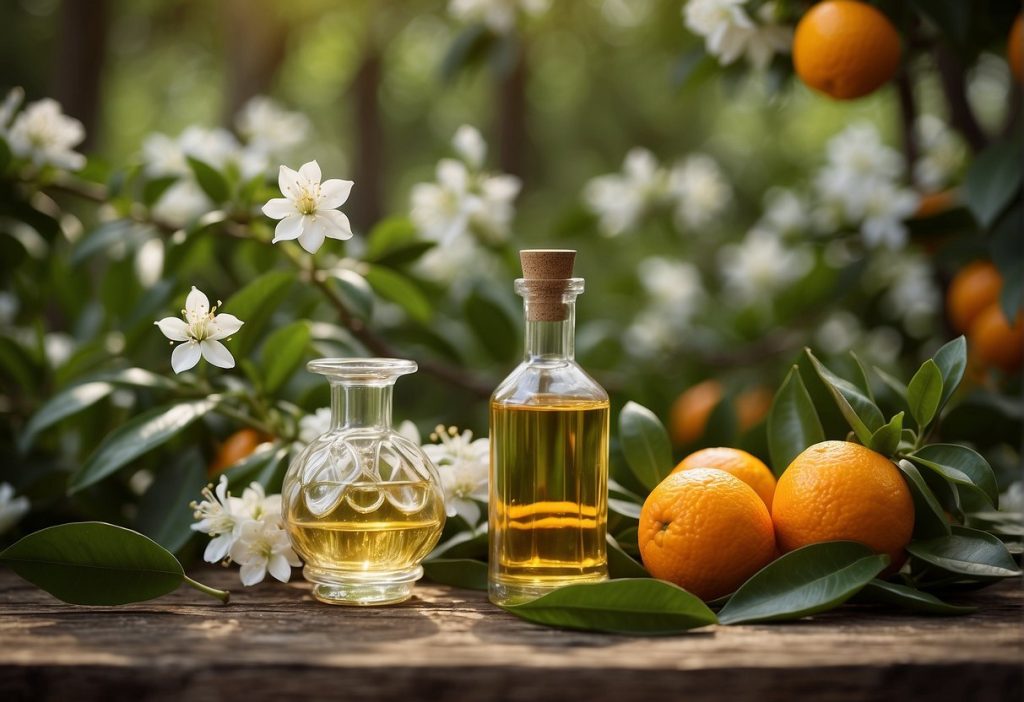Neroli oil is prized for its alluring citrusy floral scent and numerous benefits, making it a sought-after ingredient in high-end perfumes, aromatherapy, and skin care products. Its rarity and the meticulous process required for extraction contribute to its high cost. The essential oil is derived from the blossoms of the bitter orange tree, with thousands of delicate flowers needed to produce just one ounce of oil. The labor-intensive harvesting, often done by hand to preserve the fragile blossoms, adds to the overall expense.

Neroli oil’s value is further underscored by its versatility, boasting a spectrum of therapeutic properties. It’s used for its ability to soothe the mind and skin, and for its reputed benefits in reducing stress, alleviating anxiety, and promoting a sense of calm. Yet, despite its benefits, the question of why neroli oil commands such a steep price lingers for many.
Key Takeaways
- Neroli oil’s luxurious scent and therapeutic benefits make it highly desirable.
- The labor-intensive extraction process significantly increases its cost.
- The essential oil’s rarity and multifaceted uses contribute to its premium pricing.
Contents
Origins and Botanical Information

Neroli oil, prized for its captivating fragrance, is extracted from the blossoms of the Citrus aurantium, commonly known as the bitter orange tree.
Neroli Oil Source
Your cherished neroli oil comes from the delicate white flowers of the Citrus aurantium. This evergreen tree stands behind the oil’s luxurious reputation and its bitter orange nomenclature. In order to produce just one pound of neroli oil, it takes a staggering 1,000 blossoms, a fact underscoring its relative rarity and high value. Native to eastern Africa and tropical Asia, the bitter orange tree has adapted to Mediterranean climates, where it flourishes and is meticulously cultivated for this precious essence.
Extraction and Production
The production of Neroli oil is a meticulous process that requires specific techniques to ensure the highest quality. It involves laborious harvesting and meticulous steam distillation.
Harvesting Neroli Blossoms
You must know that the harvesting process of Neroli blossoms is labor-intensive. Workers handpick the delicate flowers of the bitter orange tree during a specific period of early bloom to maximize the oil yield and fragrance quality. Their efforts are critical because it takes thousands of blossoms to produce just a small amount of Neroli oil.
Steam Distillation Process
Your interest in the extraction process should note that it leverages steam distillation. This process involves carefully heating the blossoms to release the essential oil without degrading its signature fragrance. It’s a balance of time and temperature and one that demands precision to ensure the oil’s purity and strength are retained.
Benefits and Uses
Neroli oil commands a high price due to its extensive benefits and uses in aromatherapy and skincare. Its ability to influence mood and stress levels, along with its skin-nourishing properties, makes it a valuable addition to various products.
Aromatherapy Advantages
In aromatherapy, neroli oil is prized for its ability to alleviate anxiety and reduce stress. Incorporating neroli oil into your routine may improve your mood thanks to its soothing fragrance, which is both uplifting and calming.
Skincare Applications
For skincare, neroli oil offers a wealth of applications due to its antimicrobial and anti-inflammatory properties. It’s commonly found in skincare products where it helps to maintain skin health, providing a clear complexion and reducing signs of irritation.
Economics of Neroli Oil
Your understanding of neroli oil’s value hinges on the understanding of its economics. Various factors interplay to dictate its market price, making it a luxury item.
Factors Influencing Price
- Cost: The extraction of neroli oil is costly due to the high number of blossoms required.
- Labor: It involves labor-intensive methods, adding to the overall price.
- Scarcity: The quantity of oil yielded is low, contributing to its scarcity.
- High Demand: Due to its use in perfumery and aromatherapy, neroli oil is in high demand.
- Luxury: The oil’s luxury status further drives up its cost.
Frequently Asked Questions
Understanding the aspects that drive the cost of neroli oil can offer insight into its value and help you make informed decisions.
What factors contribute to the high cost of producing neroli oil?
Several factors lead to the high cost of neroli oil, including the considerable quantity of blossoms required to produce a tiny amount of oil and the labor-intensive and intricate extraction process.
How much neroli oil can typically be extracted from an orange blossom?
From the blossoms of the bitter orange tree, a very small amount of neroli oil is typically extracted, underscoring the oil’s preciousness and contributing to its high cost.
What are the benefits of neroli oil that justify its premium price?
Neroli oil is treasured for its numerous applications, including its anti-inflammatory and anxiolytic properties, which relax your mood and offer several health benefits.
Can you recommend alternative essential oils with similar properties to neroli?
While neroli is unique, alternative essential oils like lavender and rose can offer similar aromatic and therapeutic properties.
How does the rarity of the bitter orange tree affect the price of neroli oil?
The bitter orange tree’s rarity and the fact that it grows in limited regions around the world contribute significantly to the scarcity and the high price of neroli oil.
What role does the harvest and extraction process play in the pricing of neroli oil?
The harvest and extraction process is meticulous and time-consuming, impacting the labor cost and overall pricing of neroli oil.

